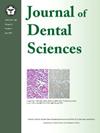Non-steroidal anti-inflammatory drugs (NSAIDs) regimens enhance synergistic selective anticancer efficacy of chemotherapeutic agents on cultured cells
IF 3.1
3区 医学
Q1 DENTISTRY, ORAL SURGERY & MEDICINE
引用次数: 0
Abstract
Background/purpose
Cancer incidences are rising, presenting challenges due to severe side effects and resistance of chemotherapeutic agents. To address these issues, we propose a strategy involving pharmaceutical compositions of PTM (Phytopolyphenols, Targeting drugs, Metals) regimens. This study aimed to investigate NSAIDs (Non-steroidal anti-inflammatory drugs)-PTM regimens enhancing anticancer selectivity and efficacy of chemotherapeutic agents on cultured cancer cells.
Materials and methods
Effects of drugs on proliferation of cultured cancer cells and pathogens was assessed using MTT assay and optical density at 600 nm (OD600) respectively. Synergistic effects of drug combinations were determined using combination index and efficacy index. ATPase activity was assayed using a colorimetric method.
Results
NSAIDs-PTM regimens demonstrated selective and synergistic anticancer effects. They also enhanced anticancer selectivity and efficacy of Cisplatin, 5-Fluorouracil, and Methotrexate. The most effective NSAIDs-PTM regimens increased anticancer efficacy by 16, 4, and 23 fold against oral, lung, and colon cancer cell lines, respectively. Additionally, these NSAIDs-PTM regimens enhanced selective anticancer efficacy of Cisplatin, 5-Fluorouracil, and Methotrexate by 8–21 fold on the three cancer cells. Furthermore, all regimens exhibited synergistic anti-efflux pump ATPase activity and antibacterial effects against four cultured pathogens.
Conclusion
The findings indicate that NSAIDs-PTM regimens not only possess synergistic and selective anticancer and antibacterial properties but also enhance anticancer selectivity and efficacy of Cisplatin, 5-Fluorouracil, and Methotrexate. Notably, all regimens exhibited anti-efflux pump ATPase, which may help overcome multidrug resistance in cancer treatment. Given that all components of PTM regimens are clinically effective and safe, further clinical studies are warranted.
非甾体抗炎药(NSAIDs)方案增强化疗药物对培养细胞的协同选择性抗癌功效
背景/目的癌症发病率正在上升,由于严重的副作用和化疗药物的耐药提出了挑战。为了解决这些问题,我们提出了一种涉及PTM(植物多酚,靶向药物,金属)方案的药物组成的策略。本研究旨在探讨NSAIDs(非甾体抗炎药)-PTM方案增强化疗药物对培养癌细胞的抗癌选择性和疗效。材料与方法采用MTT法和600 nm (OD600)光密度法观察药物对培养癌细胞和病原菌增殖的影响。采用联合指数和疗效指数评价联合用药的增效作用。用比色法测定atp酶活性。结果甾体抗炎药- ptm方案具有选择性和协同抗癌作用。它们还增强了顺铂、5-氟尿嘧啶和甲氨蝶呤的抗癌选择性和疗效。最有效的非甾体抗炎药- ptm方案对口腔癌、肺癌和结肠癌细胞系的抗癌效果分别提高了16倍、4倍和23倍。此外,这些非甾体抗炎药- ptm方案将顺铂、5-氟尿嘧啶和甲氨蝶呤对三种癌细胞的选择性抗癌效果提高了8-21倍。此外,所有方案都显示出协同抗外排泵atp酶活性和对四种培养病原体的抗菌作用。结论nsaid - ptm方案不仅具有协同和选择性的抗癌和抗菌特性,而且可以增强顺铂、5-氟尿嘧啶和甲氨蝶呤的抗癌选择性和疗效。值得注意的是,所有方案都显示出抗外排泵atp酶,这可能有助于克服癌症治疗中的多药耐药。鉴于PTM方案的所有组成部分在临床上是有效和安全的,进一步的临床研究是必要的。
本文章由计算机程序翻译,如有差异,请以英文原文为准。
求助全文
约1分钟内获得全文
求助全文
来源期刊

Journal of Dental Sciences
医学-牙科与口腔外科
CiteScore
5.10
自引率
14.30%
发文量
348
审稿时长
6 days
期刊介绍:
he Journal of Dental Sciences (JDS), published quarterly, is the official and open access publication of the Association for Dental Sciences of the Republic of China (ADS-ROC). The precedent journal of the JDS is the Chinese Dental Journal (CDJ) which had already been covered by MEDLINE in 1988. As the CDJ continued to prove its importance in the region, the ADS-ROC decided to move to the international community by publishing an English journal. Hence, the birth of the JDS in 2006. The JDS is indexed in the SCI Expanded since 2008. It is also indexed in Scopus, and EMCare, ScienceDirect, SIIC Data Bases.
The topics covered by the JDS include all fields of basic and clinical dentistry. Some manuscripts focusing on the study of certain endemic diseases such as dental caries and periodontal diseases in particular regions of any country as well as oral pre-cancers, oral cancers, and oral submucous fibrosis related to betel nut chewing habit are also considered for publication. Besides, the JDS also publishes articles about the efficacy of a new treatment modality on oral verrucous hyperplasia or early oral squamous cell carcinoma.
 求助内容:
求助内容: 应助结果提醒方式:
应助结果提醒方式:


